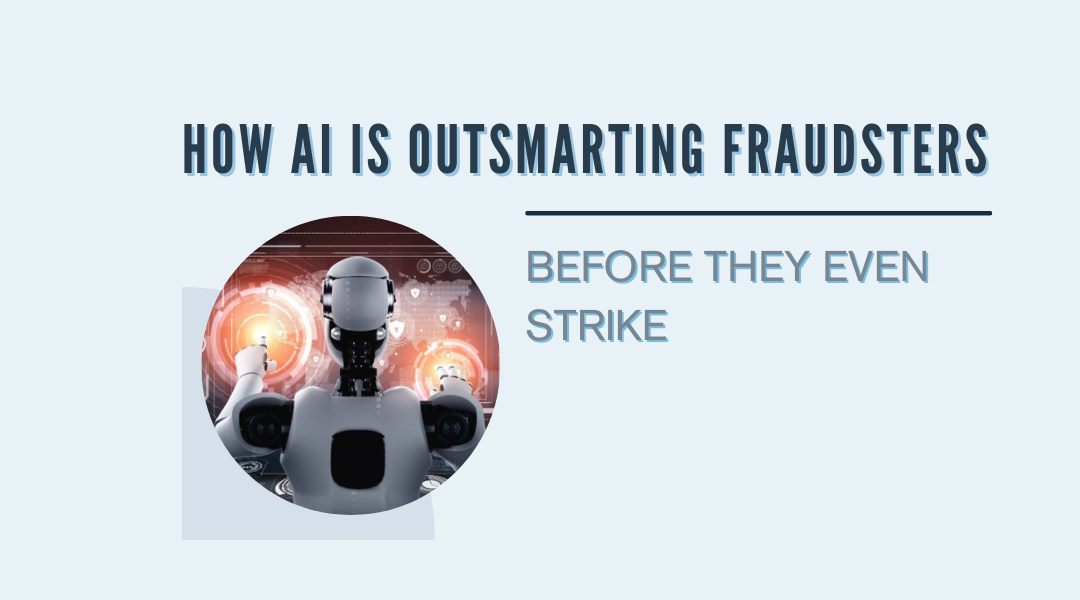In today’s hyper-connected world, fraud isn’t just growing—it’s evolving faster than many businesses can keep up. Gone are the days when a simple rule like “flag large overseas transactions” was enough. Today’s scammers use sophisticated tactics, from synthetic identities to AI-generated deep-fakes, forcing companies to fight fire with fire.
Thankfully, artificial intelligence isn’t just keeping pace—it’s setting the new standard for fraud prevention. By analyzing behavior in real time, spotting hidden patterns, and learning from every attempted scam, AI is helping businesses shut down fraud before it happens. Here’s how it works in the real world.
1. Catching What Rules Miss: The Power of Anomaly Detection
Traditional fraud systems rely on static rules, like blocking transactions over $10,000. But fraudsters know these rules—and they’ve learned to fly under the radar. AI, on the other hand, doesn’t just follow a checklist. It learns what “normal” looks like for each customer, then flags anything that doesn’t fit.
Real-World Example:
A small business owner in Chicago suddenly tries to wire $8,500 to a new overseas account at 2 a.m. Normally, this wouldn’t trigger a rule-based system—but AI notices the unusual timing, unfamiliar recipient, and deviation from the customer’s typical activity. The transaction gets paused, and the bank calls to verify. Turns out, it was a hacked account.
How It Works:
AI builds a dynamic profile for every user, tracking everything from typical login locations to usual purchase amounts. When something’s off—even slightly—it raises a red flag.
Actionable Idea:
“Scan our last three months of transactions and highlight any that break from a customer’s usual spending habits—especially sudden high-value transfers or logins from new devices.”
2. Behavioral Fingerprinting: Spotting Fraud by How People Act
Fraud isn’t just about what someone does—it’s about how they do it. AI doesn’t just look at transactions; it studies behavior. How fast does someone navigate an app? Do they hesitate before clicking “send” on large transfers? These subtle cues can reveal a scam in progress.
Real-World Example:
A retiree who usually logs into their banking app once a week suddenly starts rapid-fire transferring money to crypto wallets at midnight. The AI detects the abnormal speed, timing, and destination—then locks the account before the fraudster can drain it.
How It Works:
AI tracks behavioral patterns like typing speed, mouse movements, and even the angle a phone is held. If something feels “off,” it can step in.
Actionable Idea:
“Compare current user sessions against their usual behavior—flag any logins with unusual typing patterns or navigation speed.”
3. Stopping Fraud in Real Time—Not After the Fact
Most fraud systems work like a post-mortem: They spot scams after the damage is done. AI changes that by making split-second decisions while a transaction is still processing.
Real-World Example:
A fraudster tries to buy $3,000 worth of gift cards using a stolen credit card. The AI checks: Is this a new device? Is the purchase speed unnaturally fast? Is the billing address mismatched? Within milliseconds, it blocks the sale.
How It Works:
AI cross-references dozens of signals—IP address, device history, purchase velocity—to decide in real time whether a transaction is legit.
Actionable Idea:
“Build a system that reviews every online purchase in real time, checking for mismatches between shipping addresses, device history, and past spending.”
4. The More Fraud AI Sees, the Smarter It Gets
Unlike rule-based systems, AI doesn’t stay static. Every new fraud attempt makes it sharper.
Real-World Example:
A bank’s AI notices a surge in “urgent invoice” scams targeting small businesses. After analyzing the patterns—fake sender domains, last-minute payment demands—it starts flagging similar emails before they even reach the customer’s inbox.
How It Works:
AI continuously learns from new fraud tactics, adapting its detection methods faster than human analysts could.
Actionable Idea:
“Train our AI on the latest scam tactics—like phishing emails pretending to be IT support—and update detection models weekly.”
Where AI Fraud Detection is Making the Biggest Impact
- Credit Cards & Payments: Visa’s AI stops an estimated $25 billion in fraud annually by analyzing transaction patterns in milliseconds.
- Banking Security: Banks now use AI-driven voice recognition to catch imposters mimicking customers over the phone.
- Insurance Claims: AI spots staged accidents by comparing claim photos against a database of past incidents.
- E-Commerce: Retailers like Amazon use AI to block fraudulent returns and fake reviews before they hit the site.
Putting AI to Work: Key Questions to Ask
- “Can we identify dormant accounts suddenly showing high activity?”
- “Which transactions have the highest risk based on behavioral red flags?”
- “How can we predict emerging fraud trends before they hit us?”
The Bottom Line
Fraud isn’t going away—but with AI, businesses no longer have to play catch-up. By detecting threats in real time, learning from every attack, and adapting to new scams, AI isn’t just a tool—it’s the new frontline defense.
In a world where fraudsters are getting smarter, the best defense is an AI system that’s always one step ahead.
